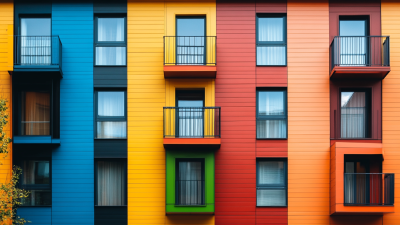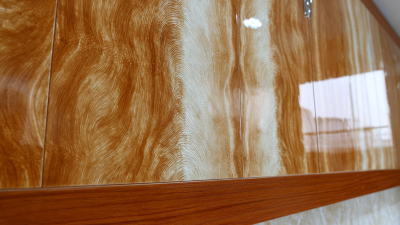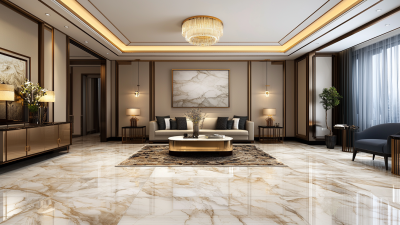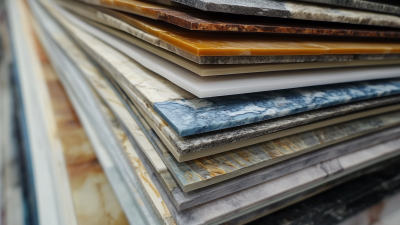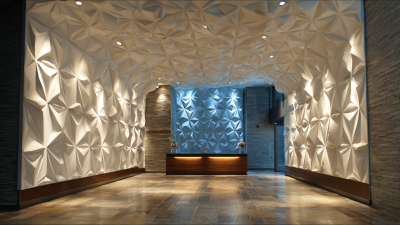
As we approach the 138th Canton Fair in 2025, the spotlight turns to innovative materials that are shaping the future of construction and design. One such material gaining significant traction is Plastic Shiplap Cladding, which combines aesthetic appeal with durability and sustainability. This versatile cladding solution not only enhances the visual appeal of buildings but also meets the growing demand for eco-friendly alternatives in the construction industry. At the fair, industry experts will converge to explore the latest trends, technological advancements, and market insights surrounding Plastic Shiplap Cladding. Participants will have the opportunity to engage with leading manufacturers and gain firsthand knowledge about how this material is poised to revolutionize architectural designs, offering insights into its applications, benefits, and the future landscape of construction materials. The 138th Canton Fair serves as an essential platform for professionals to discover and discuss the cutting-edge developments in Plastic Shiplap Cladding, ultimately shaping the future of building aesthetics and functionality.

As we look towards 2025, the rise of plastic shiplap cladding is rapidly transforming the building and construction industry. This innovative material offers a sustainable alternative to traditional wood cladding, combining durability with minimal environmental impact. Made from recycled plastics, plastic shiplap not only reduces waste but also provides weather resistance and low maintenance requirements, making it an appealing choice for eco-conscious builders and homeowners alike.
Tips for considering plastic shiplap cladding include evaluating the source of materials to ensure they are truly recycled. Additionally, look for products that offer warranties or certifications to guarantee their longevity and performance. The aesthetic versatility of plastic shiplap allows for various designs, so don't hesitate to consult with design professionals to find the best fit for your project.
Sustainability trends for 2025 emphasize the need for materials that support a green building agenda. With ongoing innovations in production and design, plastic shiplap cladding is positioned to meet these demands effectively. By embracing such advancements, stakeholders can contribute to a more sustainable future while benefiting from the practical advantages that this material brings to modern architecture.
As interior design continues to evolve, the conversations surrounding material choices are becoming increasingly crucial. According to a recent report by ThinkLab, the demand for sustainable and innovative materials has surged by 35% over the past two years. This shift reflects a growing awareness among interior designers of the environmental impact of their selections and the need to embrace materials that are both functional and environmentally responsible. Events such as the upcoming Design & Build Week showcase the latest advancements in materials, encouraging stakeholders to explore options like plastic shiplap cladding that promise not just aesthetic appeal but also durability and sustainability.
Industry leaders have recognized the integral role of innovative materials in shaping modern interiors. The emphasis on sustainability has led to the emergence of new materials that not only enhance design but also address critical issues such as waste reduction and energy efficiency. With a reported 45% of designers actively seeking out sustainable alternatives, it is clear that future design choices will heavily reflect these evolving priorities. As we look towards events like the 138th Canton Fair in 2025, it becomes apparent that discussions surrounding such material innovations will shape the landscape of interior design, inspiring a new generation of projects focused on both beauty and sustainability.
As the demand for innovative building materials surges, the plastic shiplap cladding market is poised for notable growth, reflecting the shifting consumer preferences towards sustainability and durability. According to recent analyses, the Vinyl Chloride Monomer (VCM) market, a key component in plastic cladding, was valued at $10.7 billion in 2024 and is anticipated to reach $14.5 billion by 2033, showcasing a compound annual growth rate (CAGR) of 4.0% from 2026 onward. This trend underscores a broader shift within the construction industry, as consumers increasingly seek materials that offer versatility and environmental benefits without compromising aesthetic appeal.
Furthermore, insights from secondary research indicate that the decorative laminates market is also expanding, with a projected CAGR of 3.8%. This growth highlights the increasing consumer preference for customizable and visually appealing surfaces in residential and commercial projects. As manufacturers respond to these evolving trends, the integration of advanced technologies in plastic cladding production is likely to enhance product performance and broaden market accessibility, positioning plastic shiplap cladding as a frontrunner in the siding sector.
| Dimension | 2023 Trends | 2025 Projections | Market Demand (%) |
|---|---|---|---|
| Material Quality | High UV Resistance | Enhanced Durability | 30% |
| Sustainability | Recycled Materials | Biodegradable Options | 45% |
| Design Variety | Traditional Styles | Modern Aesthetics | 25% |
| Installation Ease | Click-Fit Systems | Self-Aligning Panels | 35% |
| Color Retention | Fading Resistance | Longer Lasting Colors | 40% |
At the 138th Canton Fair in 2025, the spotlight will be on the innovative designs of plastic shiplap cladding, a material that combines durability with aesthetic appeal. Exhibitors will showcase a variety of cutting-edge patterns and textures that reflect the latest trends in interior and exterior applications. From rustic finishes that echo traditional wood to sleek, modern styles suitable for contemporary homes, these designs are sure to inspire architects and designers alike.
In addition to aesthetic variety, sustainability will also be a key theme at this year's fair. Many companies are focusing on eco-friendly manufacturing processes and materials, increasing the appeal of plastic shiplap cladding not just for its looks but also its minimal environmental impact. Attendees can expect to see creative displays that highlight how these innovative materials can enhance both residential and commercial spaces, ensuring that sustainability doesn't compromise style. The blend of functionality, trend-driven designs, and eco-conscious thinking will define the future of plastic shiplap cladding, making it a prominent choice in modern construction and renovation projects.

As the 138th Canton Fair in 2025 approaches, plastic shiplap cladding manufacturers face a dynamic landscape influenced by shifting consumer preferences and regulatory pressures. According to a recent report by Smithers Pira, the global market for engineered wood and plastics in construction is expected to grow at a CAGR of 5.8%, reaching an estimated $295 billion by 2025. This growth presents both challenges and opportunities for manufacturers who must adapt to ensure their products meet evolving sustainability standards while maintaining competitive pricing.

One significant challenge is the increased consumer demand for environmentally friendly materials. A survey by Nielsen indicates that 66% of global consumers are willing to pay more for sustainable brands, emphasizing the need for plastic shiplap manufacturers to innovate their materials and production processes. Companies are exploring recycled content and bio-based alternatives to enhance the sustainability of their products.
Furthermore, regulatory shifts, such as the European Union's Green Deal, are pushing manufacturers to comply with stricter environmental regulations, which can drive innovation but also increase production costs. Successfully navigating these challenges will require a proactive approach to sustainability, embracing new technologies, and staying informed about market trends to capitalize on growth opportunities in this transforming market.
